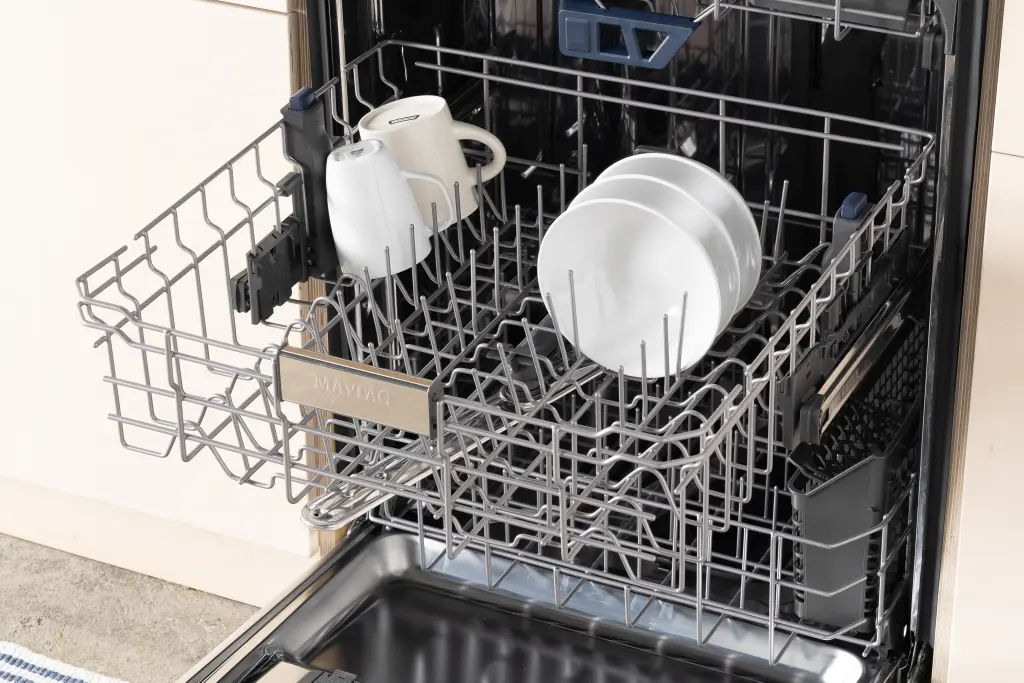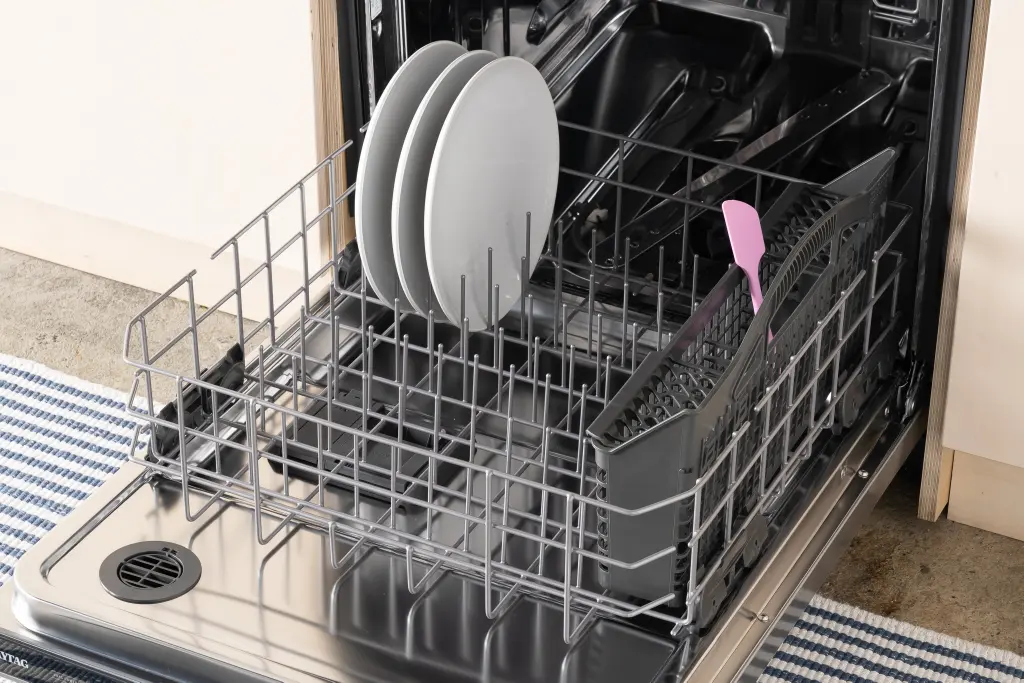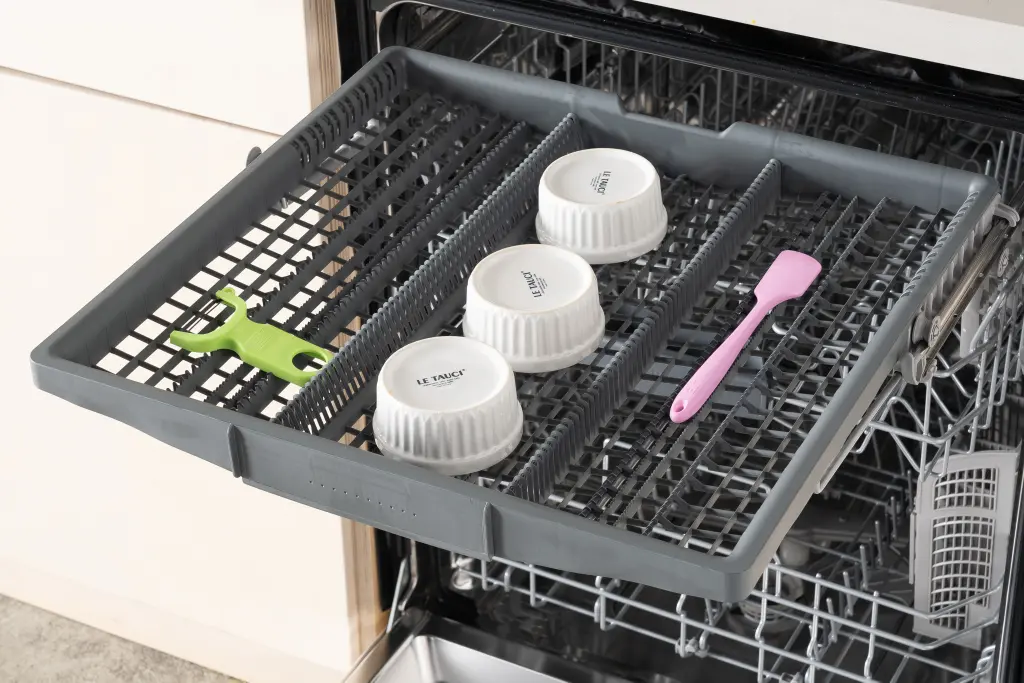Introduction
The drain line in your dishwasher plays a critical role in proper drainage, ensuring that wastewater is effectively removed during the dishwasher’s cycles. Over time, the drain line can become clogged with food particles, debris, and mineral buildup, leading to drainage issues and unpleasant odors. Regularly cleaning the dishwasher drain line helps maintain its functionality and prevents potential problems. In this guide, we will provide a step-by-step process to effectively clean your dishwasher drain line, ensuring optimal performance and a fresh-smelling kitchen.

How do I clean my dishwasher drain line?
Safety Precautions
Before starting the cleaning process, it is important to take safety precautions to protect yourself and prevent damage to the dishwasher:
1.1. Turn off Power and Water
For safety purposes, disconnect the power supply to the dishwasher by unplugging it or turning off the circuit breaker. Additionally, turn off the water supply to the dishwasher, usually located under the sink or in the basement.
1.2. Allow Dishwasher to Cool Down
If you have recently run the dishwasher, allow it to cool down sufficiently before starting the cleaning process to avoid burns from hot surfaces or components.

Remove Dishwasher Filters and Racks
2.1. Locate and Remove Filters
The filters in the dishwasher are responsible for trapping larger food particles. Consult the dishwasher manual to locate the filters, which are usually found at the bottom of the dishwasher. Depending on the model, there may be multiple filters, including a main filter and a fine filter.
2.2. Clean and Remove Debris
Remove the filters from the dishwasher and rinse them under running water to remove loose debris. Use a soft brush or toothbrush to gently scrub away any stubborn residue. Set the filters aside to dry while you proceed with the next steps.
2.3. Remove Lower Dish Rack
To access the drain line, remove the lower dish rack from the dishwasher, ensuring any dishes or utensils are removed beforehand. Set the rack aside in a safe place.
Clean the Drain Line Opening
3.1. Locate the Drain Line Opening
The drain line opening is usually located at the back of the dishwasher, near the floor. It is a small opening covered by a cap or grate.
3.2. Remove the Cap or Grate
Using a screwdriver or your fingers, carefully remove the cap or grate covering the drain line opening. Exercise caution to avoid damaging the components or injuring yourself.
3.3. Inspect and Remove Debris
Inspect the drain line opening for any visible debris or blockages. Use a flashlight to get a clear view. If you notice any debris, use a long, flexible brush or pipe cleaner to gently dislodge and remove it. Be careful not to push the debris further into the drain line.

Flush the Drain Line
4.1. Prepare a Cleaning Solution
Create a cleaning solution by mixing equal parts distilled white vinegar and hot water in a container. The vinegar’s acidity helps break down residue and mineral buildup, allowing for effective cleaning.
4.2. Attach a Hose
Attach a hose or a long, flexible tube to the drain line opening. Ensure a secure fit to prevent leakage.
4.3. Pour the Cleaning Solution
Carefully pour the cleaning solution into the hose or tube, allowing it to flow into the drain line. The solution will help dissolve any remaining debris or buildup within the drain line.
4.4. Run Hot Water
After pouring the cleaning solution, turn on the hot water faucet nearest to the dishwasher and allow hot water to flow through the hose or tube, flushing out the drain line. This helps rinse away loosened debris and clears any remaining residue.
4.5. Remove the Hose and Replace Cap or Grate
Once the drain line is thoroughly flushed, remove the hose or tube and replace the cap or grate over the drain line opening, ensuring a secure fit.

Reassemble the Dishwasher
5.1. Replace the Lower Dish Rack
Carefully place the lower dish rack back into the dishwasher, ensuring it is properly aligned and sits securely on the tracks.
5.2. Insert the Dry Filters
Once the filters are completely dry, reinsert them into the dishwasher. Ensure that they are properly seated and aligned according to the manufacturer’s instructions.
Run a Test Cycle
6.1. Reconnect Power and Water
Reconnect the power supply and turn on the water supply to the dishwasher.
6.2. Choose a Cleaning Cycle
Select a cleaning cycle on the dishwasher control panel. Opt for a longer cycle to allow for thorough cleaning of all components.
6.3. Start the Cycle
Start the dishwasher cycle and allow it to run until completion. This ensures that the dishwasher is thoroughly cleaned, including the drain line and associated components.
Regular Maintenance and Prevention
7.1. Scrape Off Food Residue
To minimize debris buildup in the dishwasher drain line, scrape off excess food residue from dishes before placing them in the dishwasher. This simple step helps prevent large particles from entering and clogging the drain line.
7.2. Rinse Dishes Before Loading
Rinsing dishes before loading them into the dishwasher helps reduce the amount of debris that enters the system, decreasing the chances of drain line clogs and contamination.
7.3. Regularly Clean and Maintain Filters
Regularly remove and clean the filters according to the manufacturer’s guidelines, typically once a month, or as needed. This prevents the accumulation of debris and ensures proper filtration.
Troubleshooting Persistent Issues
8.1. Check for Persistent Clogs
If you continue to experience drainage problems even after cleaning the drain line, there may be persistent clogs further along in the plumbing system. In such cases, it may be necessary to consult a professional plumber to investigate and clear the clogs.
8.2. Inspect the Air Gap (if applicable)
Some dishwashers have an air gap installed on the countertop or sink to prevent backflow. If you notice water or debris coming out of the air gap, it may indicate a clog or blockage in the drainage system. Consider cleaning or unclogging the air gap or contacting a plumber for assistance.
8.3. Assess the Drain Hose
Inspect the drain hose, which connects the dishwasher to the plumbing system. Make sure it is not clogged, kinked, or damaged. If you notice any issues, such as visible clogs or leaks, replace the hose or seek professional help to ensure proper drainage.

Conclusion
Cleaning your dishwasher drain line is an essential maintenance task that helps prevent clogs and ensures optimal performance. By following a few simple steps, you can effectively remove debris, clear blockages, and minimize odors. Remember to take necessary safety precautions, remove filters and the lower dish rack, clean the drain line opening, flush the drain line with a vinegar and water solution, reassemble the dishwasher, and run a test cycle. Additionally, practicing regular maintenance, such as scraping off food residue and rinsing dishes before loading them, helps prevent future drain line issues. With proper cleaning and maintenance, your dishwasher will continue to operate efficiently, providing you with clean dishes and a fresh-smelling kitchen.

